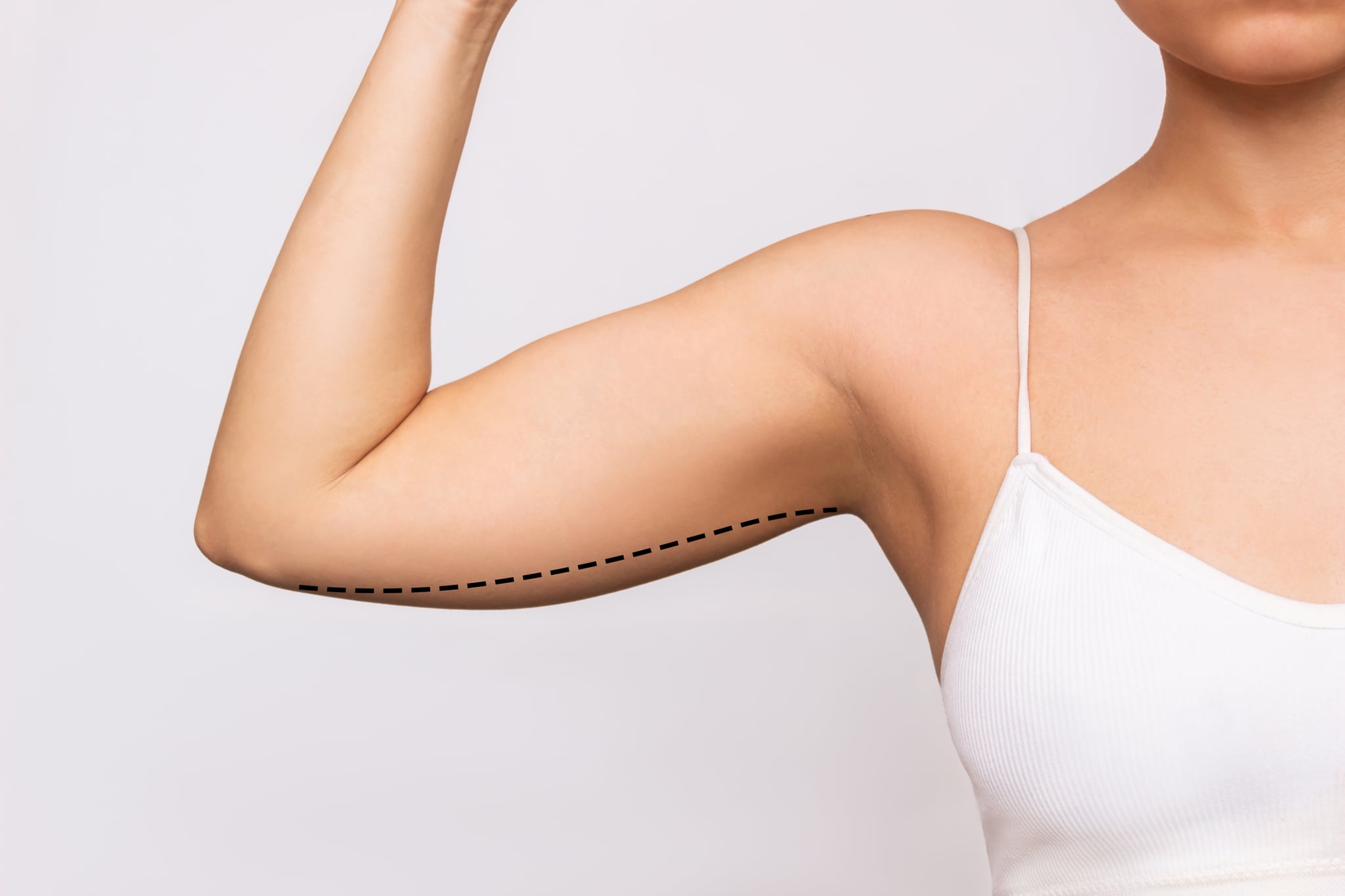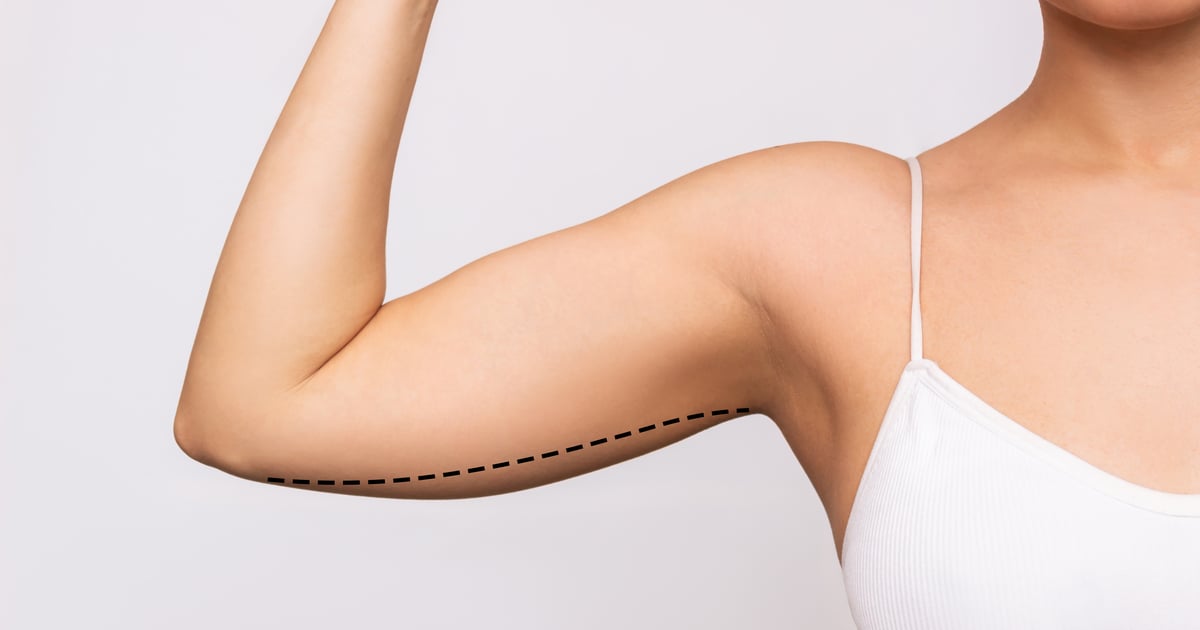
Image Source: Getty / Marina Demeshko
As information regarding plastic surgery becomes more readily available — through celebrities opening up about it and others posting their experiences on social media — people are discovering new procedures they’ve never heard of before. This includes innovations like the “ponytail lift” and “tip lift,” as well as oldies but goodies, like brachioplasty.
Otherwise known as an arm lift or arm reduction, a brachioplasty surgery addresses excess, unwanted skin and fat from the inner and upper arm. It’s a fairly common surgery, but it still isn’t widely talked about. If you’re even mildly curious, keep reading for more information on brachioplasty from a plastic surgeon.
What Is a Brachioplasty?
Brachioplasty addresses fat and excess skin in the inner, upper portion of the arm. “The aim of this procedure is to improve any loose, sagging arms and provide a tighter, more toned appearance,” Sujatha Tadiparthi, MB, BCh, MRCS, MSc, FRCS, a consultant cosmetic surgeon, tells POPSUGAR. People usually seek it out after first attempting to reduce fat in their arms by toning the area through diet and exercise.
Who’s a Good Candidate For Brachioplasty Surgery?
Two main reasons generally lead to loose skin in the arm area: major weight loss and age. “With general aging, our skin loses its strength and elasticity,” Dr. Tadiparthi says. “There may be excess ‘flabby’ skin in either the front or back of the arms.”
People of all genders can get brachioplasty, though it’s most commonly performed on women. It’s recommended you be at least 18 years old and at your desired weight before undergoing it.
Brachioplasty Cost
The American Society of Plastic Surgeons cites an arm-lift cost of around $4,861. This number varies by region and surgeon. Also, keep in mind that most health-insurance plans don’t cover arm lifts because they characterize them as an elective surgery.
Brachioplasty Surgery Risks
Every surgical procedure comes with a list of risks and complications. For brachioplasty, this includes “permanent scarring, lumpy or stretched scars, bleeding, infection, bruising and swelling, seroma (fluid around the wound), residual excess tissue, altered skin sensation, and asymmetry (of scar length, location, and amount of tissue removed),” Dr. Tadiparthi says. Also keep in mind that if your weight following an arm lift fluctuates, you may need to undergo the procedure again in the future. “It is important to reach your ideal weight before the procedure and remain stable in your weight afterward,” she advises.
What to Expect During Brachioplasty Surgery
All plastic-surgery procedures start with a consultation where you’ll be assessed for eligibility — for both the procedure itself and going under general anesthesia. “I examine patients to see how much loose excess skin there is, the location of it, and whether it will improve with an arm lift,” Dr. Tadiparthi says. Occasionally, liposuction is needed before an arm lift if any further contouring is desired in the area.
The procedure is performed under general anesthesia, which carries its own risks; oftentimes, you’re able to go home that same day. “During the operation, if liposuction is needed, this is done first,” Dr. Tadiparthi explains. “Then, the excess skin is removed with an elliptical incision extending from the elbow to the underarm.”
You will be sent home with a dressing that runs the length of your arm covering the incision, as well as “a tight elastic ‘garment’ [that] will need to be worn for the better of six weeks to reduce swelling and provide support.”
Brachioplasty Before and After
https://www.instagram.com/p/B_NTs4djTo7/
https://www.instagram.com/p/CJr5zTdBEN7/
Brachioplasty Scar and Recovery
You will be left with a vertical scar that runs the length of your upper arm, but due to its location on the inner part of the arm, it’s not too noticeable and easy to conceal. The exception is, “some patients are prone to poor scarring and can have more lumpy, ‘hypertrophic’ scars that settle over time,” Dr. Tadiparthi says. Your post-op dressings will stay on for two weeks. After about four weeks, gentle activity, such as light exercise, is fine. “After six weeks, you should be able to return to full normal activity such as swimming, high-intensity exercise.”
Source: Read Full Article
